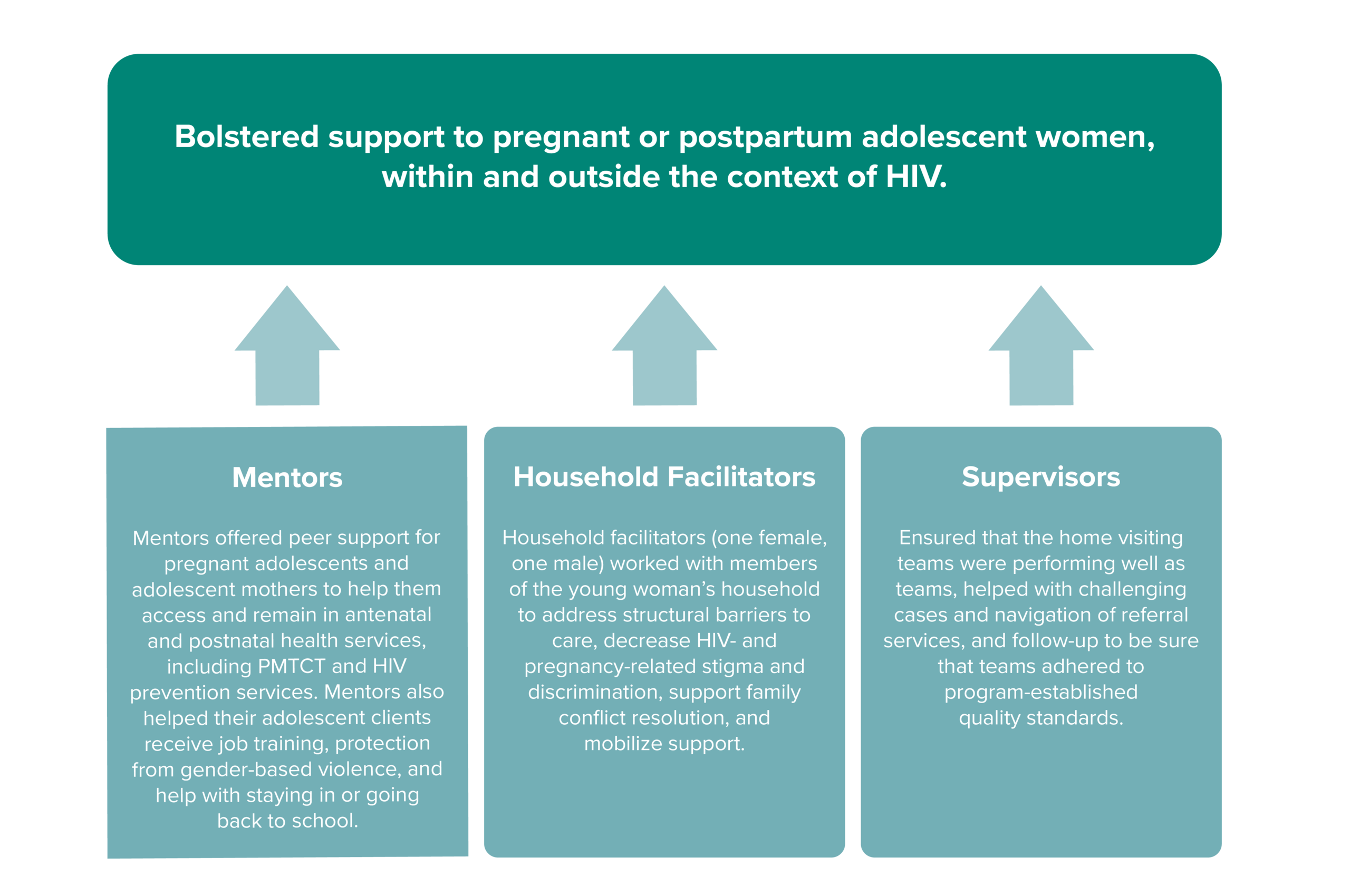Supporting Adolescents in Pregnancy and Motherhood
Health care programs designed to address the needs and health of adolescent girls and young women and their infants are more critical than ever.
The parallel risks of pregnancy and HIV for young women and of vertical HIV transmission for their infants make girls and adolescents 10–19 years old a critically important group. Nearly two million adolescents 10–19 years of age are living with HIV in sub-Saharan Africa, and the number of new HIV infections among adolescents is expected to increase by 2030. One in five adolescent girls and young women in sub-Saharan Africa becomes pregnant by age 18, which will result in an estimated 16.4 million adolescent mothers by 2030.
Jielimishe uzazi na afya
is Kiswahli for “take pride in parenthood and health.” It encourages the pregnant adolescent to be confident and have self-worth during pregnancy and to seek health services as appropriate.
Effective response to pregnant adolescents, adolescent mothers, and their children requires understanding and responding to the health and social factors that pregnant adolescents and adolescent mothers in high-HIV-prevalence settings experience. Antenatal care (ANC) remains a significant entry point for HIV testing for adolescent women. It also provides a base for expanding adolescent-focused HIV prevention and treatment services for both HIV-negative and HIV-positive adolescents.
The Elizabeth Glaser Pediatric AIDS Foundation (EGPAF) 2017–2019 Jielimishe Uzazi na Afya (JUA) project, a collaborative partnership between international and Africa-based civil society organizations, funded by the U.S. President’s Emergency Plan for AIDS Relief (PEPFAR) through the United States Agency for International Development (USAID), focused on supporting access to and retention in ANC, including prevention of mother-to-child HIV transmission (PMTCT) services, as well as postnatal mother-baby services among adolescents in Kenya.
The JUA design, informed by an exhaustive literature review, offered a case management model in which home visiting teams (HVTs) provided individualized services for adolescents and their households. These teams were recruited through a comprehensive process that identified individuals with the skills and previous community-level training to support adolescent girls. Intensive training ensured that the home visiting teams were well prepared for the challenging and rewarding work of engaging with adolescents and households and working as a team.

JUA Program Results:



